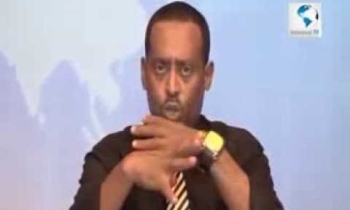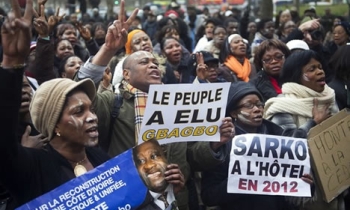On the wall of Lionel Barber's office is a curiosity that says a lot about the Financial Times editor. It is a note written by him to the late Hunter S Thompson after they had spent an evening together chewing the fat. It lists the running mates for two former US presidents, Harry Truman and Dwight Eisenhower, whose names neither could recall during their discussions the previous night. Thompson replied to Barber in his typical fashion by scrawling remarks across the letter and returning it.
Clearly, the gonzo journalist and the pukka FT journalist got along well, and it is a reminder that Barber, despite appearing to be a conventional product of the British middle class - public school, Oxford, 22 years working for the FT - has a radical streak. At least, that is what he would like us to think. Radicalism is certainly in the air at the FT, which unveils a new look today. Barber has overseen the paper's most dramatic revamp - or, to use his phrase, "refresh" - in a generation.
There is a new typeface, a bolder design and a new configuration of pages. The paper's news pages look busier and there is a necessary change of pace in the back half, with an extra foreign news page adjacent to a features page with a more modern design. Columns by Lucy Kellaway and her hugely popular alter ego, Martin Lukes, will be more prominent.
Bold blurbs
The "companies and markets" section has also changed, with features-style content on the first spread, including a half-page column devoted to business personalities. "The FT has never been that good at writing about people," says Barber, "and it's time we cracked it."
Perhaps the most eye-catching change of all arrives next Saturday with a revamp of the weekend paper. Its front page is brighter, with bold blurbs to the inside that are unmissable.
Barber is conscious of the pitfalls of change for change's sake, having taken note of a warning once given by Don Berry, the grand old man of Sunday Times and Daily Telegraph journalism, to Max Hastings: "Redesigns are the last resort of scoundrels."
He certainly did not rush into it, because he saw his main task after taking over the editorship in November 2005 as dealing with content and integrating the newsprint and online platforms. To that end, he selected his own executive team and set about remodelling the editorial department to ensure 24/7 coverage.
He was rewarded with a gradual improvement in sales, both globally and in Britain. Emboldened by the FT's defiance of the downward circulation trend across the market, he decided six months ago to start the redesign process.
As with all editors extolling the virtues of a revamp, Barber enthuses about better navigation, liveliness, accessibility, sharpness, modernity and "the unlocking of hidden treasures". The aim, he says, is to make the paper easier to scan. He understands that the reaction of focus groups is not definitive.
But, journalistic scepticism being what it is, not all the staff are as convinced as he is of the new look. One internal critic says witheringly that it has the appearance of "a poor man's Guardian". Though I saw the mock-up pages for only a matter of minutes, I do not agree. Its pace and the additional story count suggest to me that it is more like "a rich man's Daily Telegraph". But is that what FT readers - or, more pertinently, potential FT readers - really want?
The FT's owner, Pearson, has approved a multimillion-pound promotional budget that begins with train, tube and taxi posters and roadside hoardings to be followed by TV advertising. The slogan, revealed in these pages almost two months ago, is "We live in financial times".
In fact, slogans abound. One of the smaller changes is the introduction above the leaders of a phrase carried by the FT when it was launched in 1888: "Without fear and without favour". The promotional wraparound in this morning's paper, showing a cityscape montage drawn from the world's business capitals, is headlined: "Welcome to a sharper FT".
That image will also be reproduced in posters, though it is altogether less eye-catching than another one that morphs Sir Richard Branson into Che Guevara.
Clearly, the Barber FT is becoming more populist and lighter in tone, though its content remains as sober and serious as ever. To accommodate an extra foreign page, sport is being squeezed to the margins, though not scrapped entirely. The chief sportswriter, Matthew Engel, will have a column in the Saturday magazine.
One of the most surprising decisions involves the magazine's former editor, John Lloyd, who is to become the paper's TV critic. There will also be new columnists, including Channel 4's chairman, Luke Johnson, and the former deputy editor of the Economist, Clive Crook, writing from Washington.
But the newspaper is only one platform. Thousands read the FT online, so does the newsprint change herald a revamp of the website too? "Yes," says Barber firmly. "There will be further important changes later this year. We have guys working flat out, looking at the design." He is particularly exercised by the inadequate navigation and poor presentation, though he thinks the search engine "is now of sufficient quality".
He points out that Alphaville, the blog that targets private equity and hedge fund players, has secured a growing audience with its lighter touch, and cites the success of the "view from the top" video interviews pioneered by the US managing editor, Chrystia Freeland. "Video really is the coming medium", he says.
Global news
Will the FT pull down its website pay wall? "We're looking at the business model," he says, cautiously. "We realise that our material has value, and that we want to make money from it. But how the model breaks down is still being decided."
Just as Barber believes he has overcome the split between newsprint and website, so he dismisses arguments that the FT suffers from the dichotomy of being both a global news organisation and a London-based operation appealing to the City.
"There is no conflict between best in British class and being a global newspaper. We are an international newspaper rooted in the City of London, and I think people understand that. The FT stands out as a global niche product."
Surely he would agree that, in the US, the Wall Street Journal is unassailable? He doesn't see it like that, arguing that the FT's US sale is now more than 150,000 and growing while, in Europe, the WSJ "is somewhat in retreat".
Despite Barber's upbeat assessment of his paper's future, there is trepidation among some of his staff. Most notably, there is concern about the decision to hire 20 staff in Manila to work on FT.com.
"We want to transfer some of the boring keystroking editorial tasks to Manila," he says. Isn't that called outsourcing? "Well, that's your word for it, but there are no job losses as result of this move. We're doing this to take the pressure off our production staff here in London because we want them to do creative work."
Barber clearly wants to avoid the spread of fear and loathing in Southwark Bridge Road.









